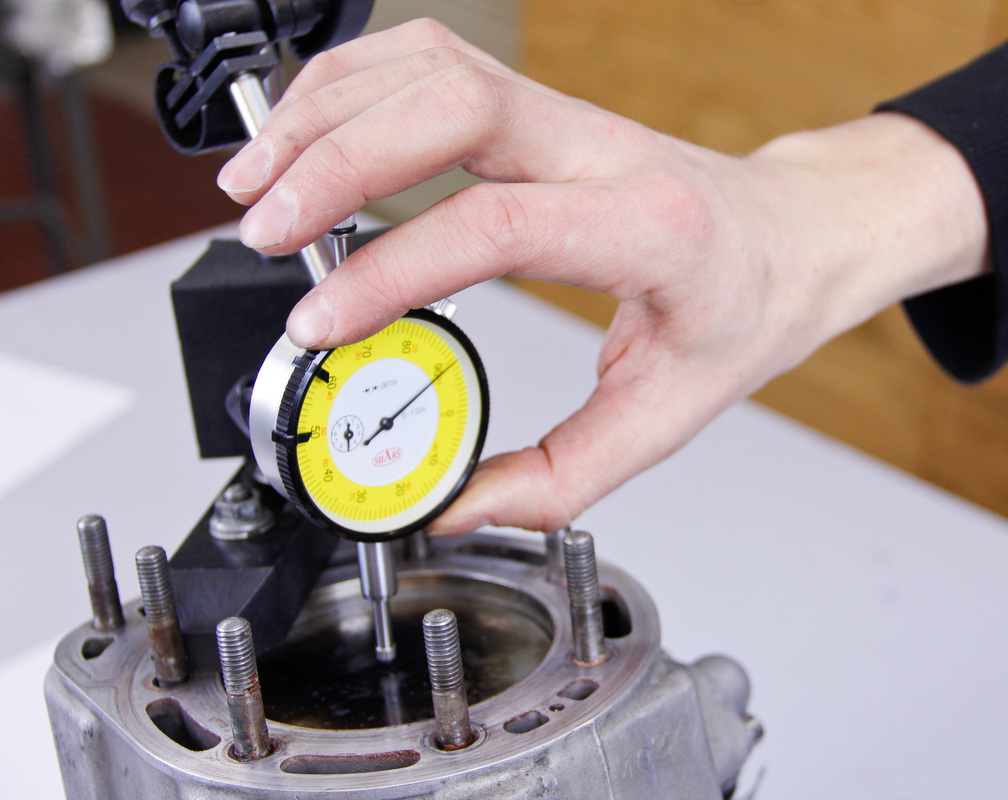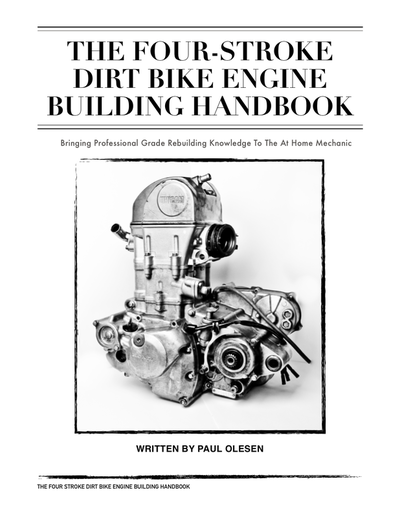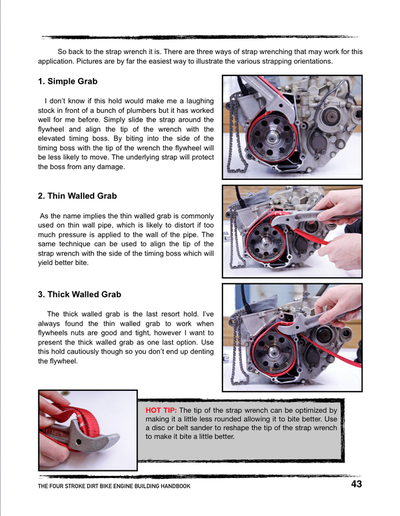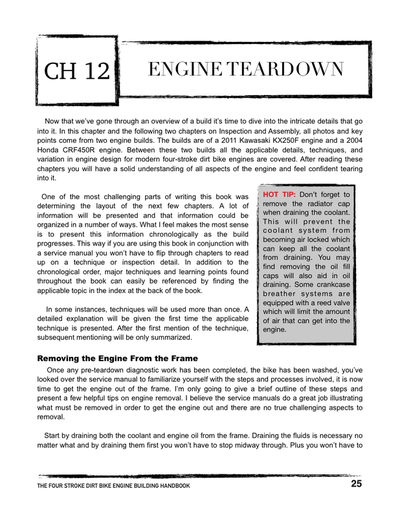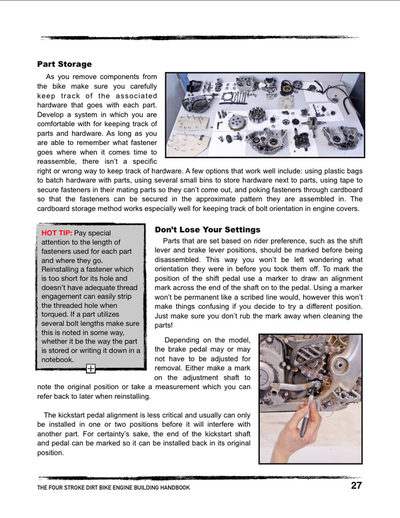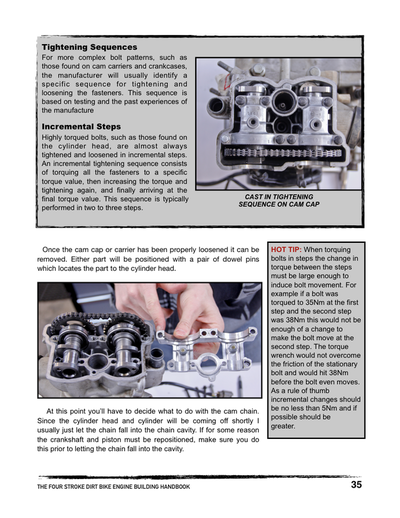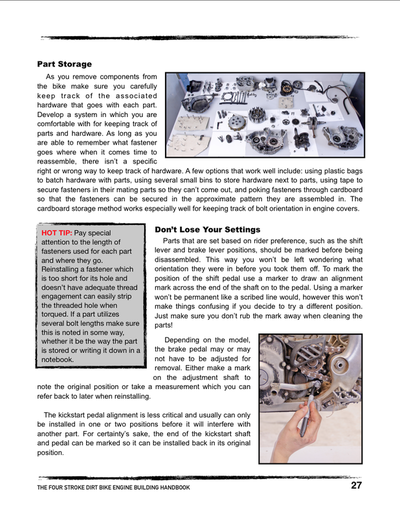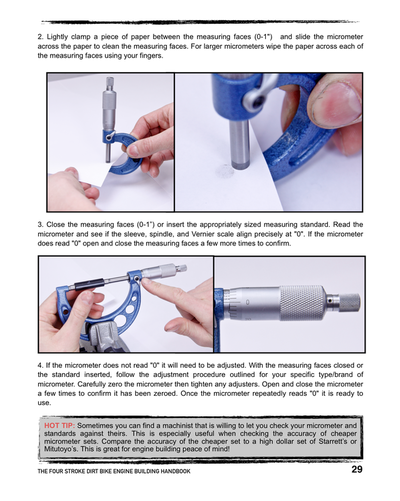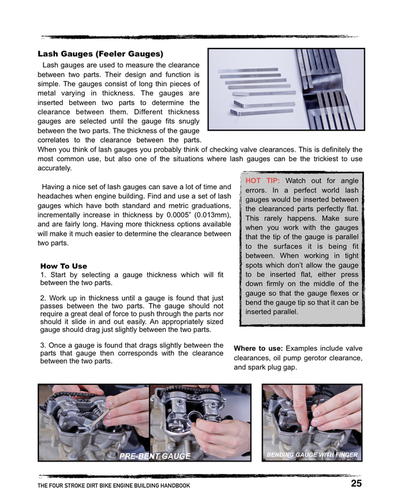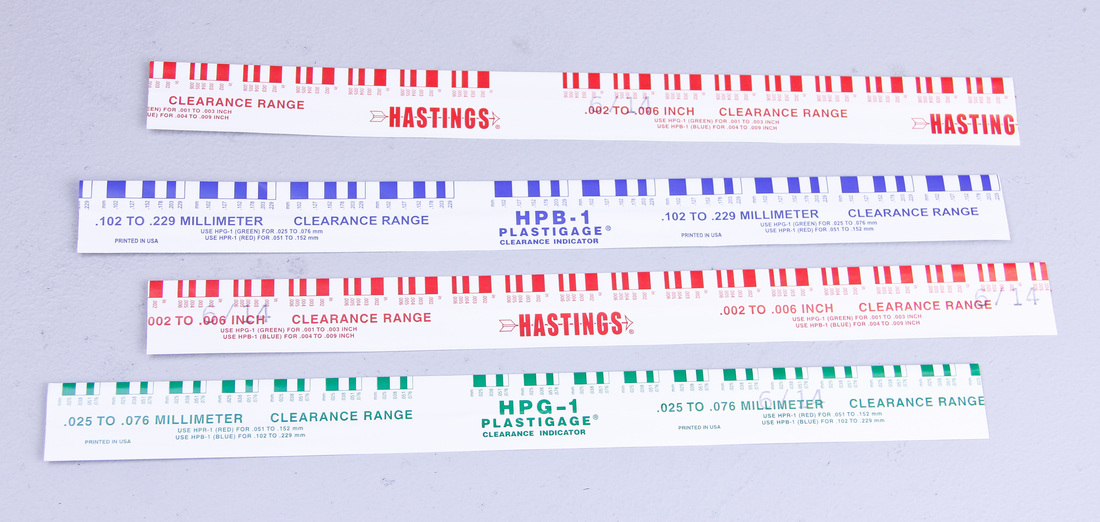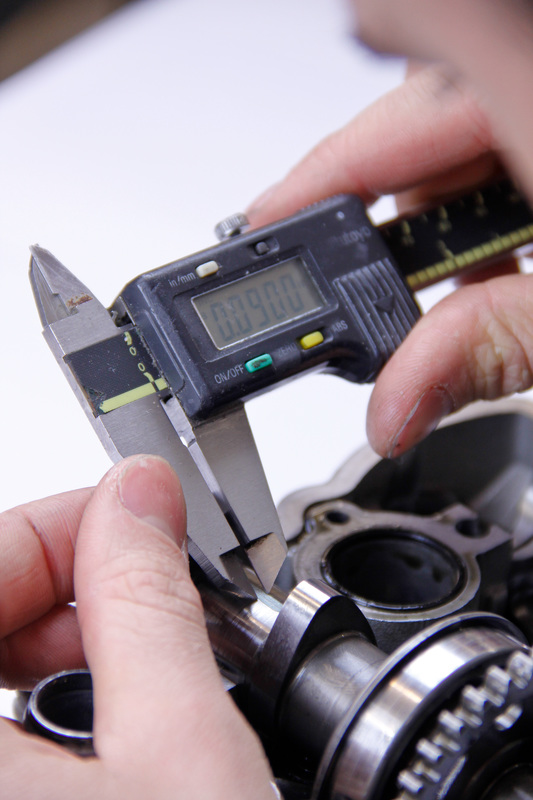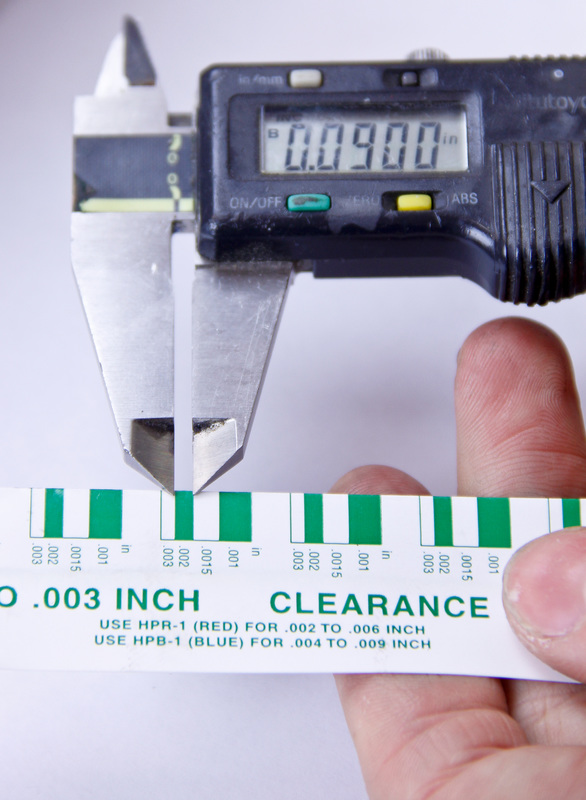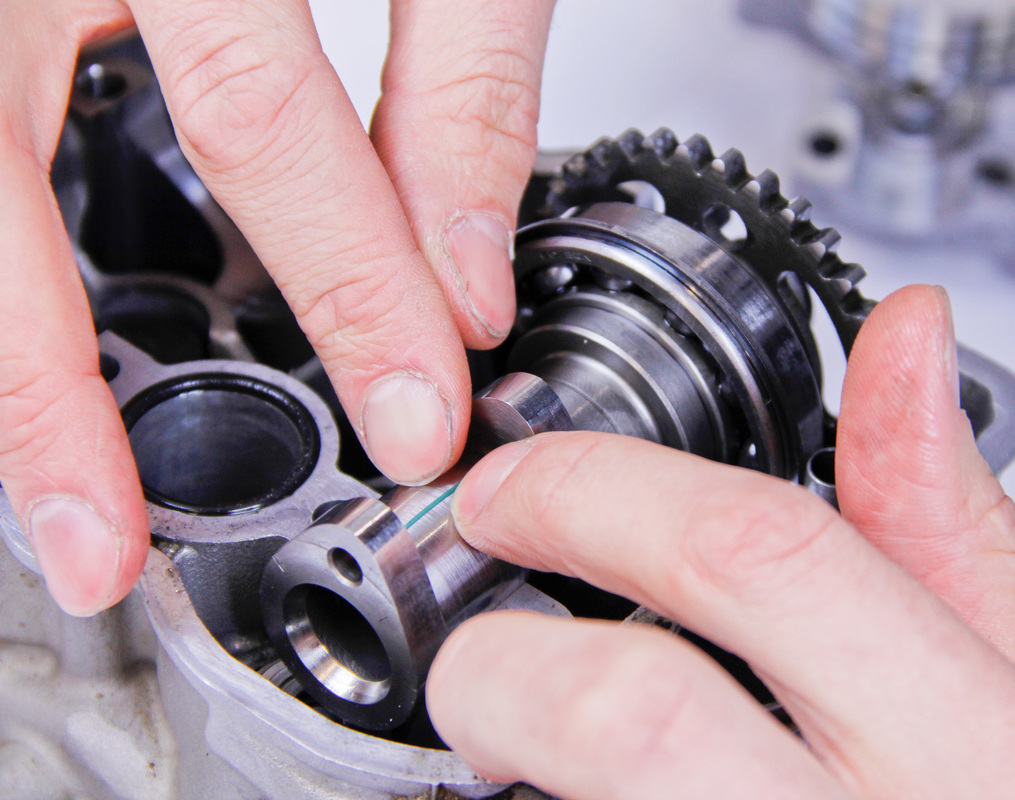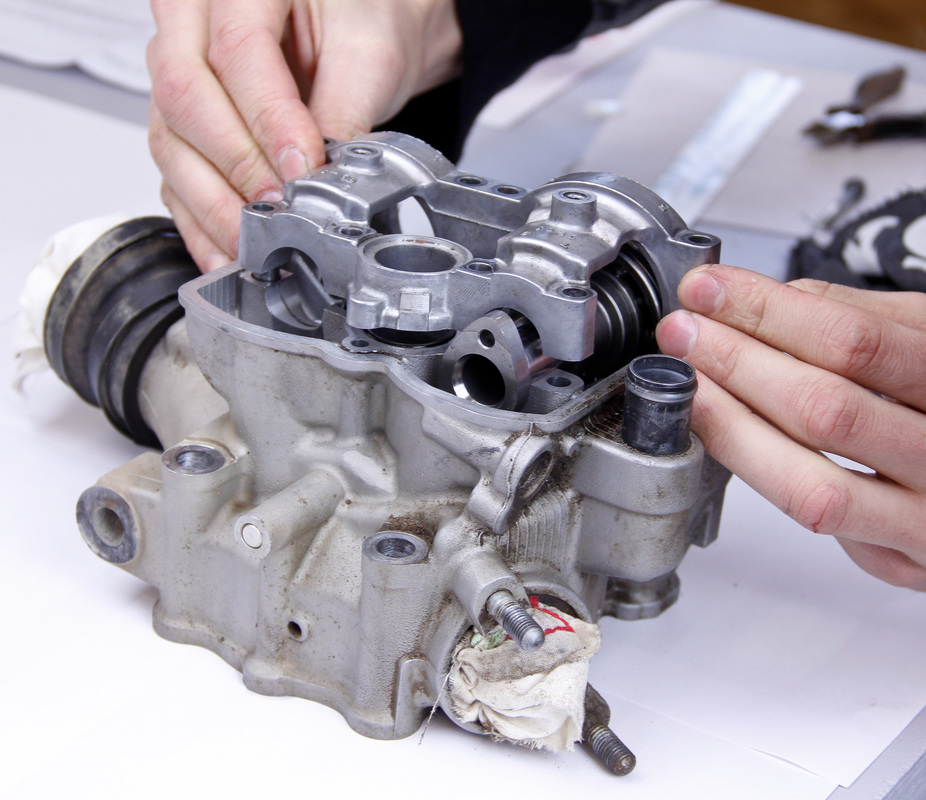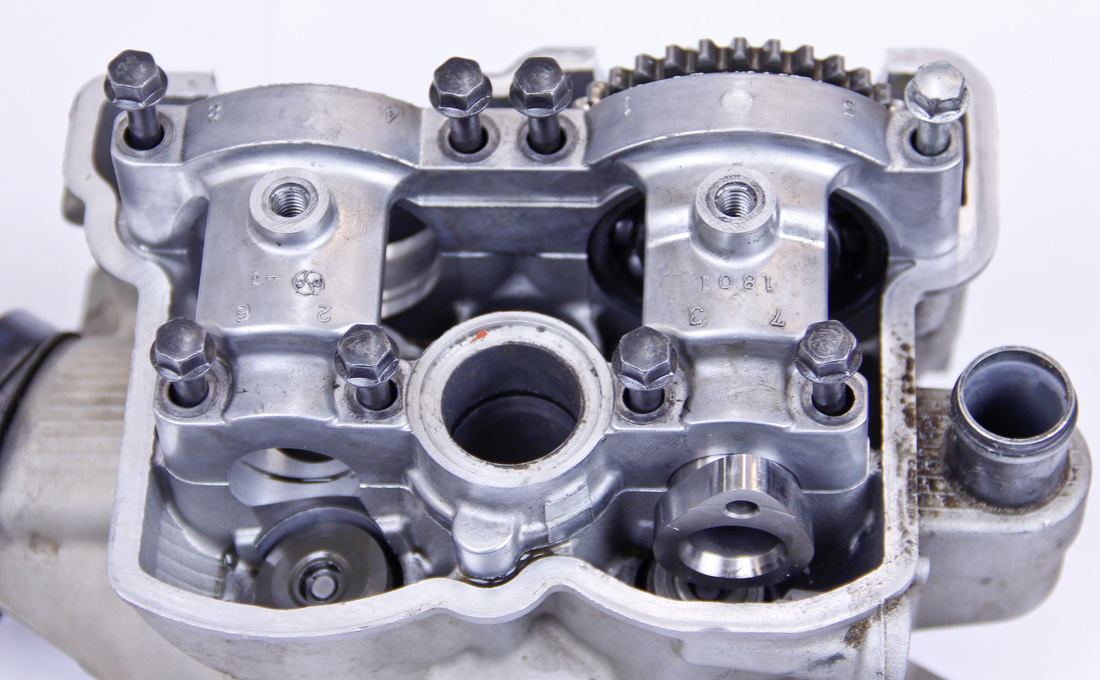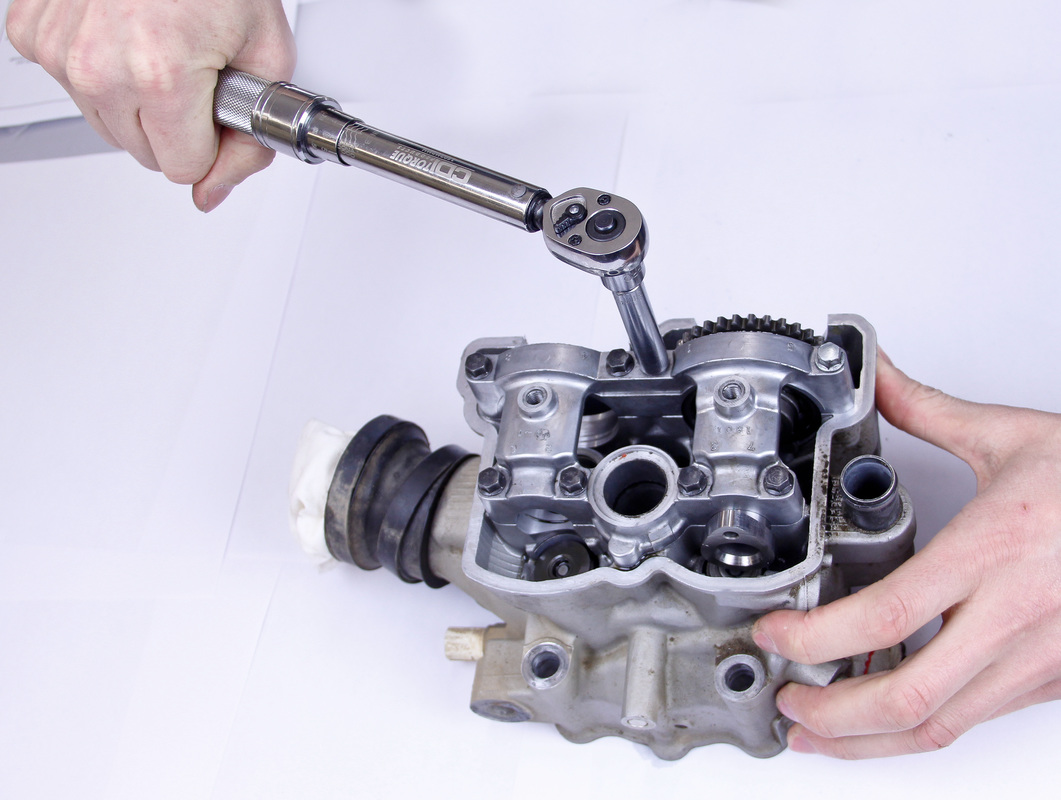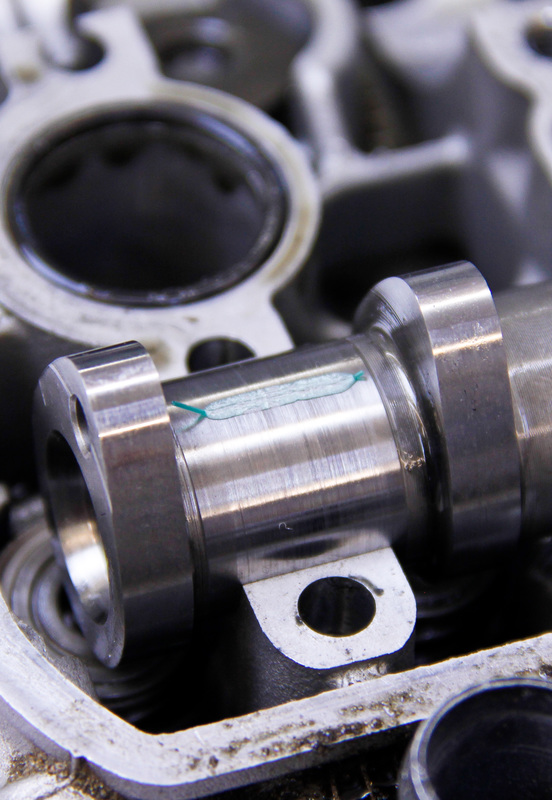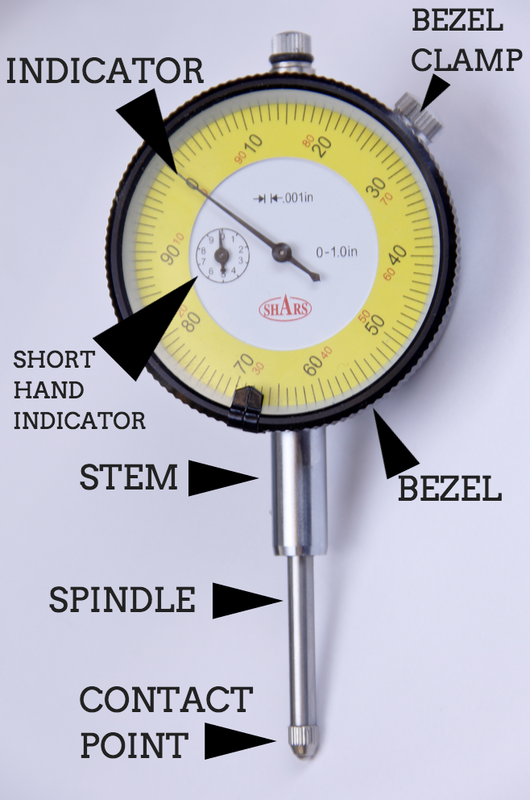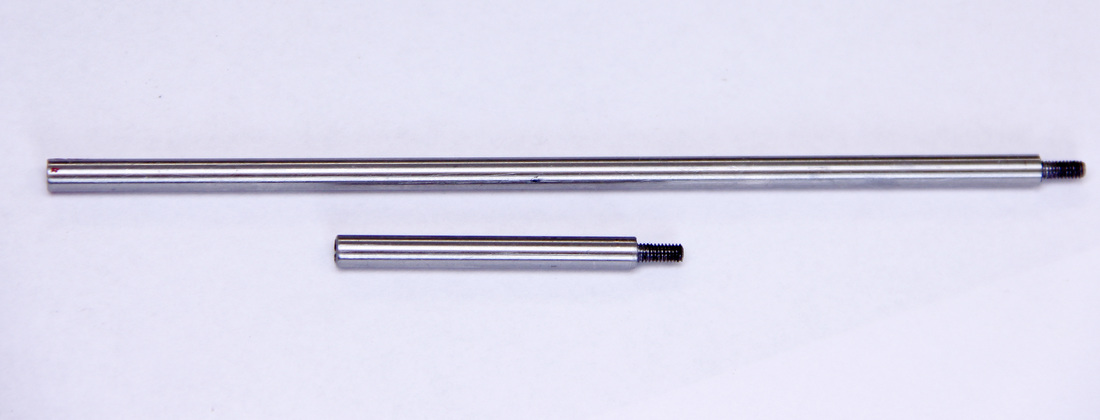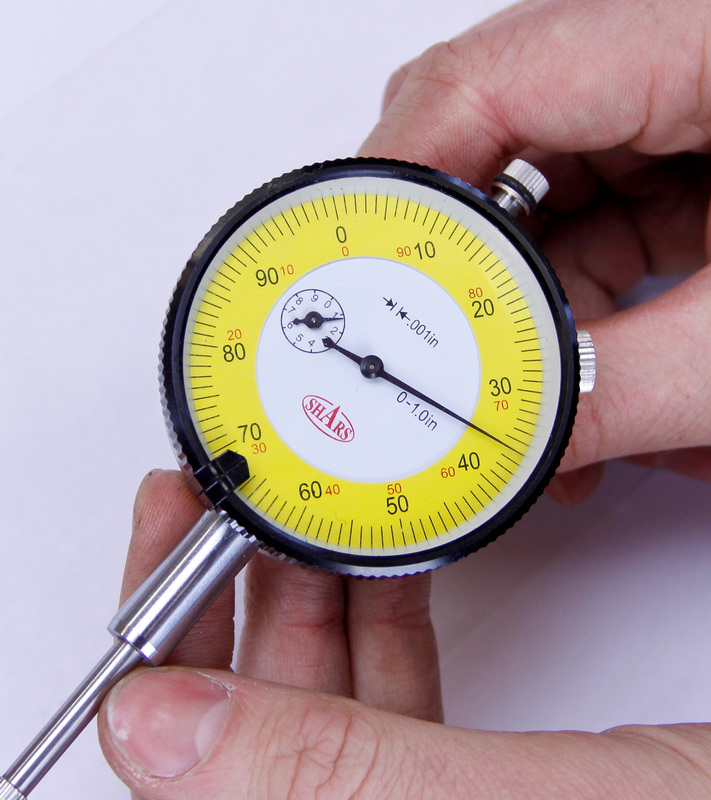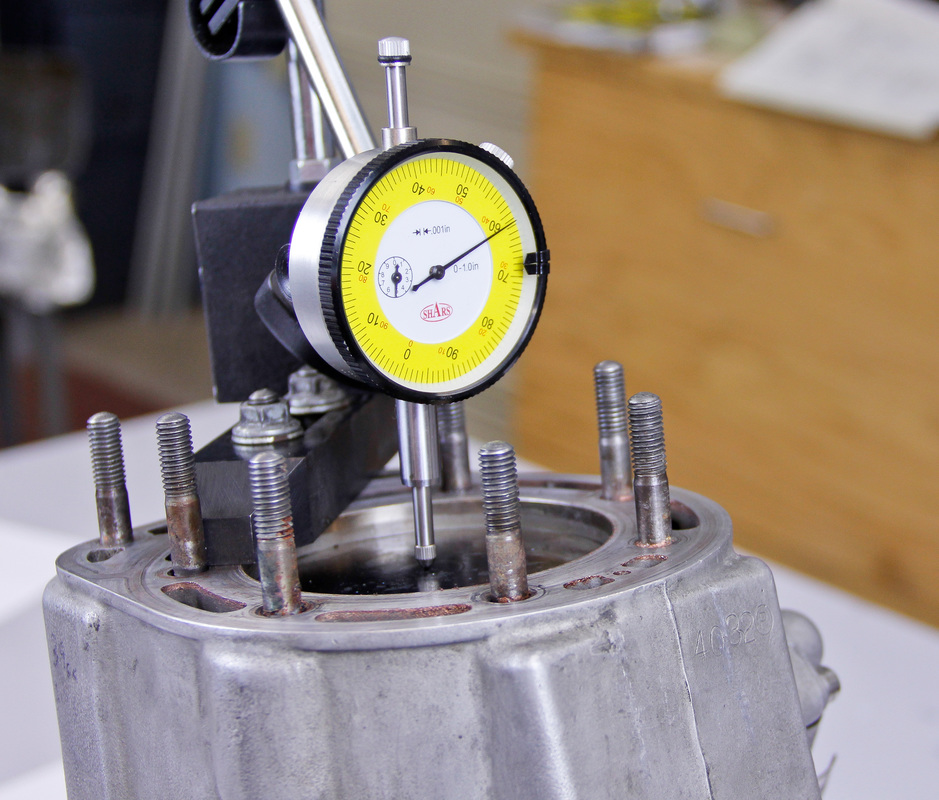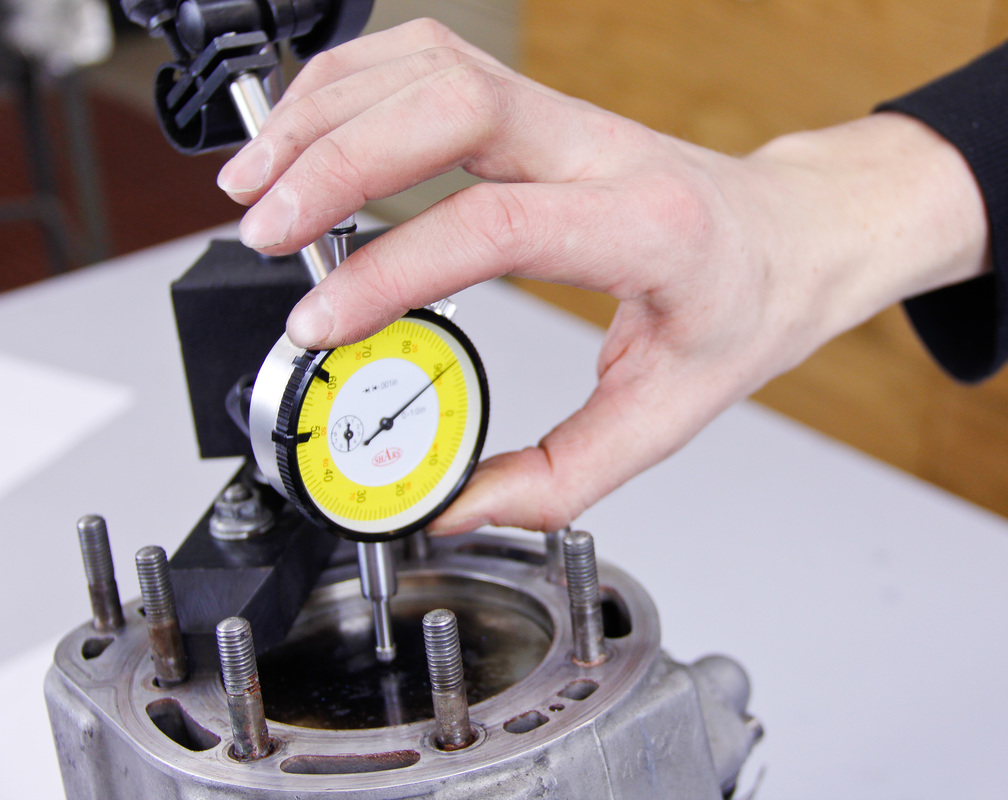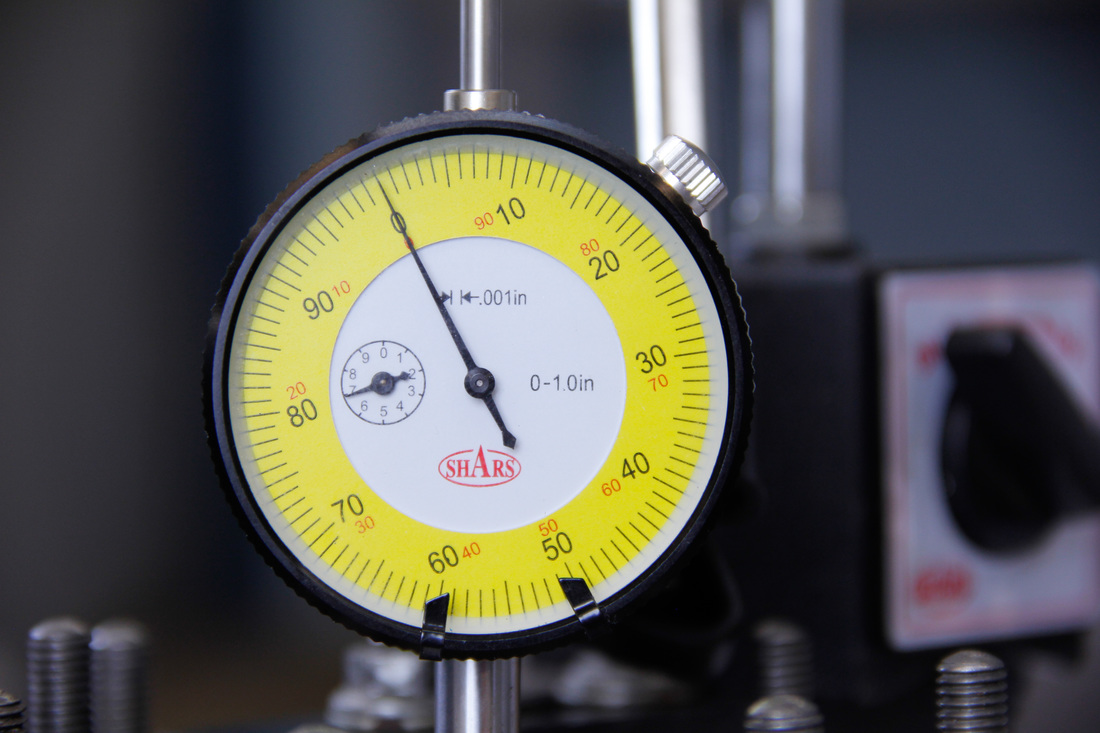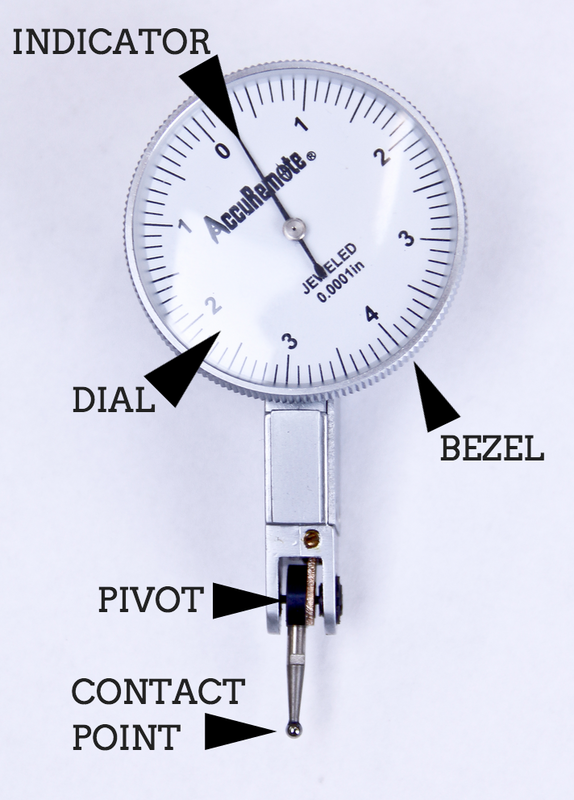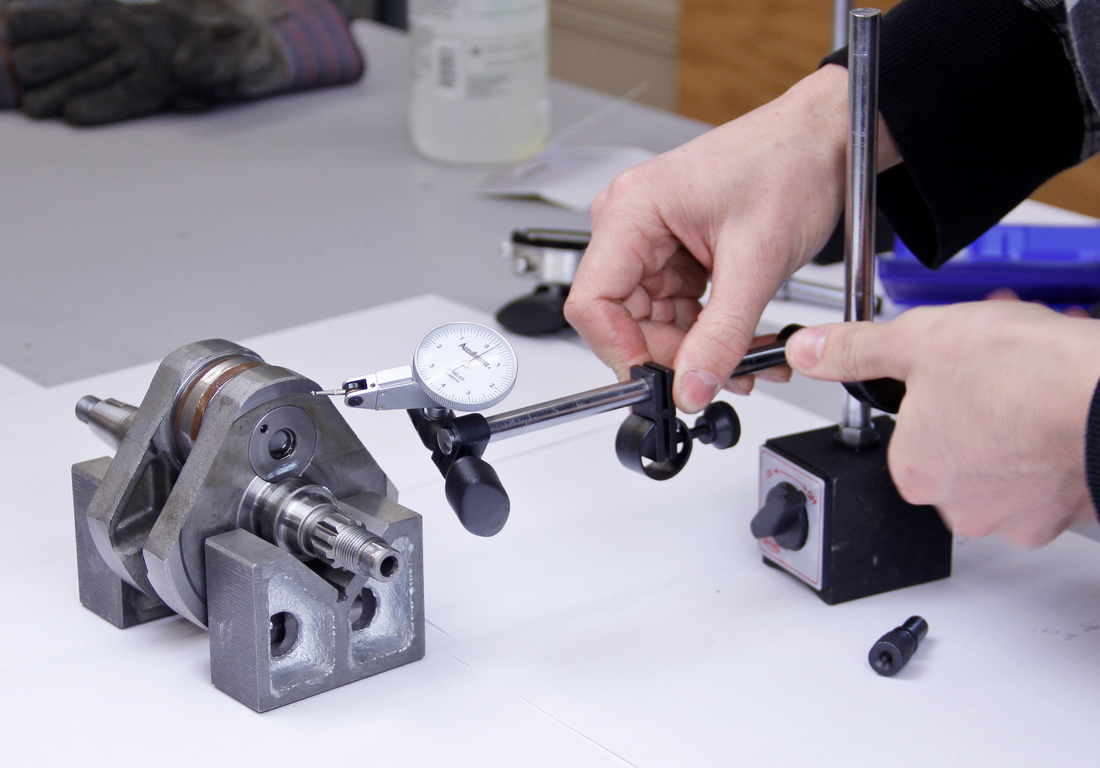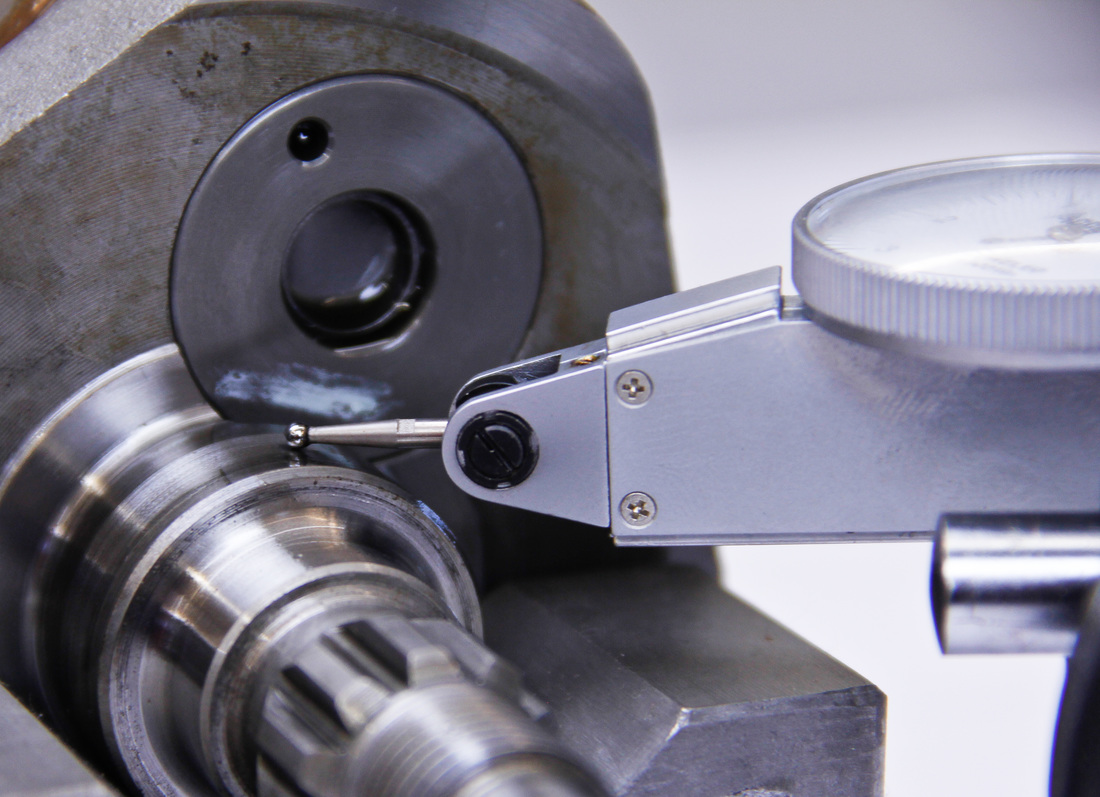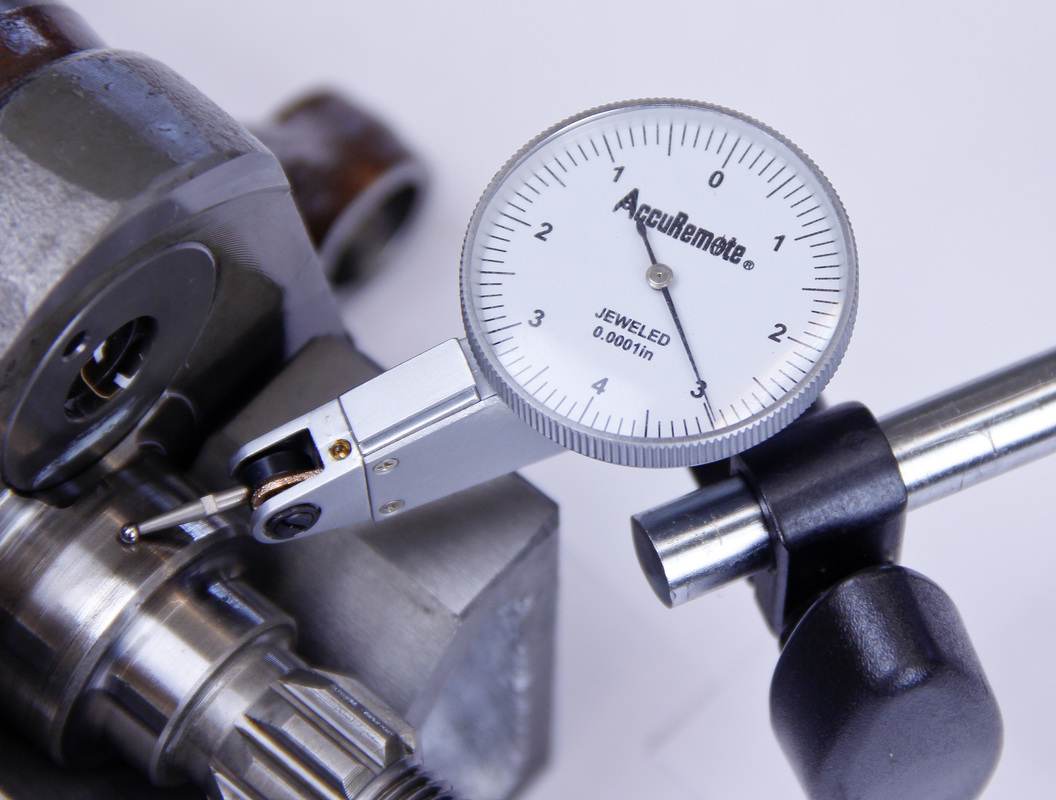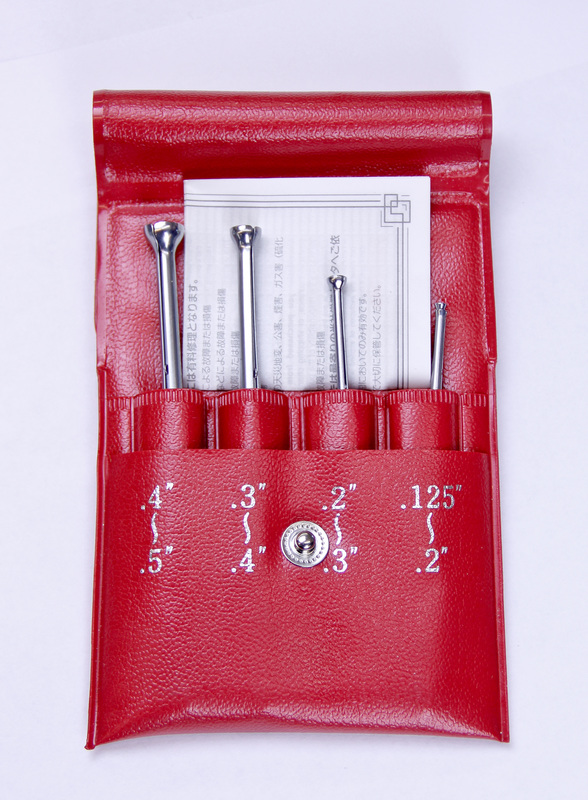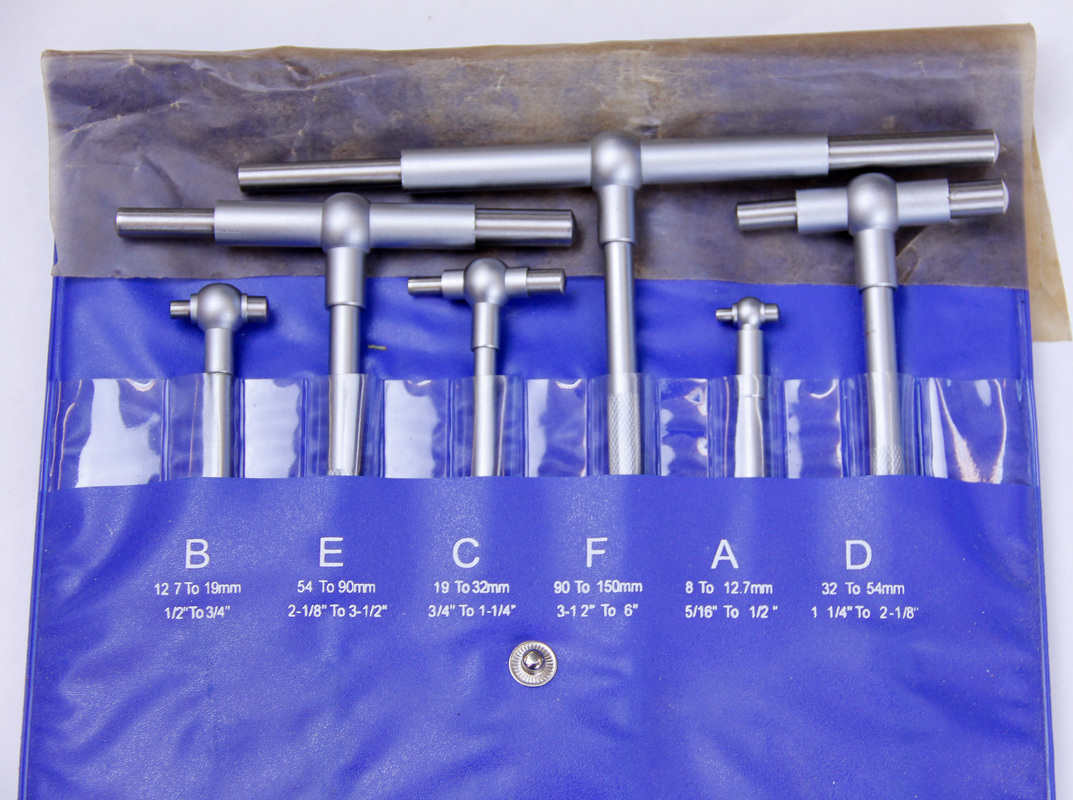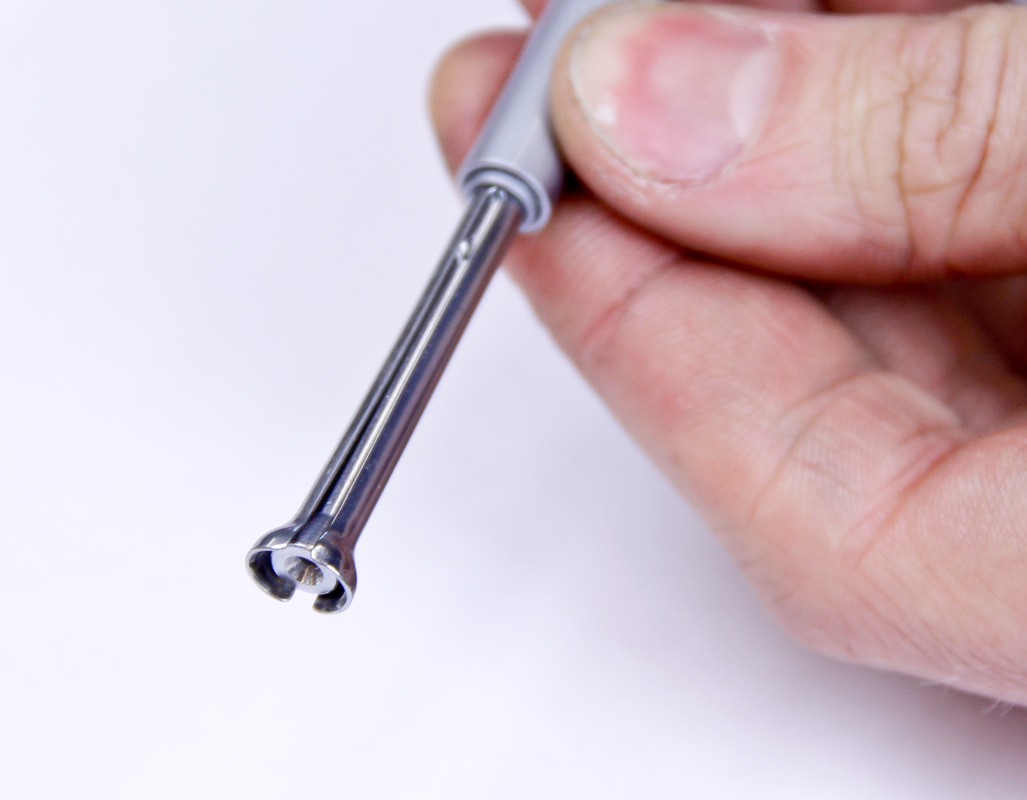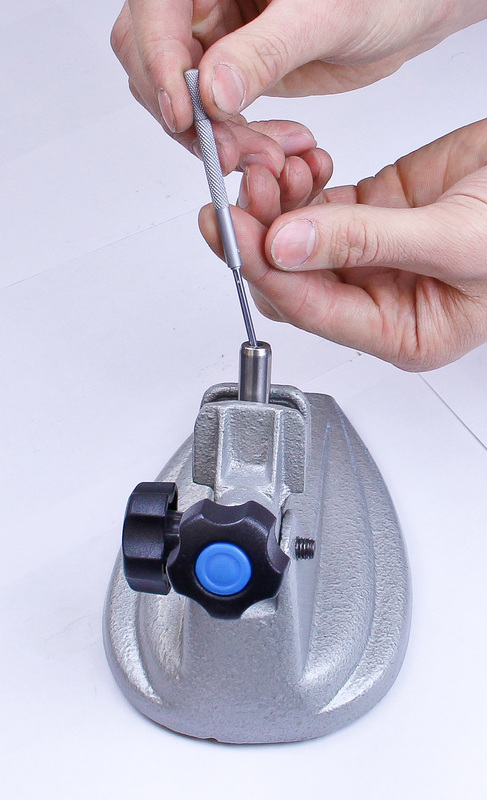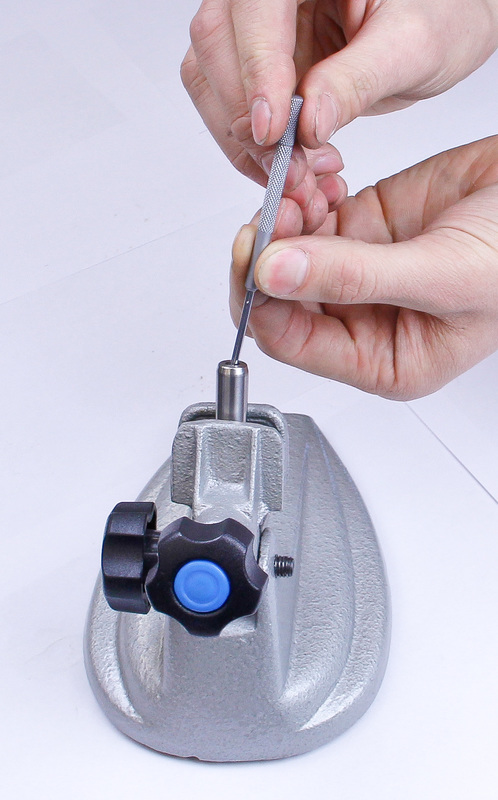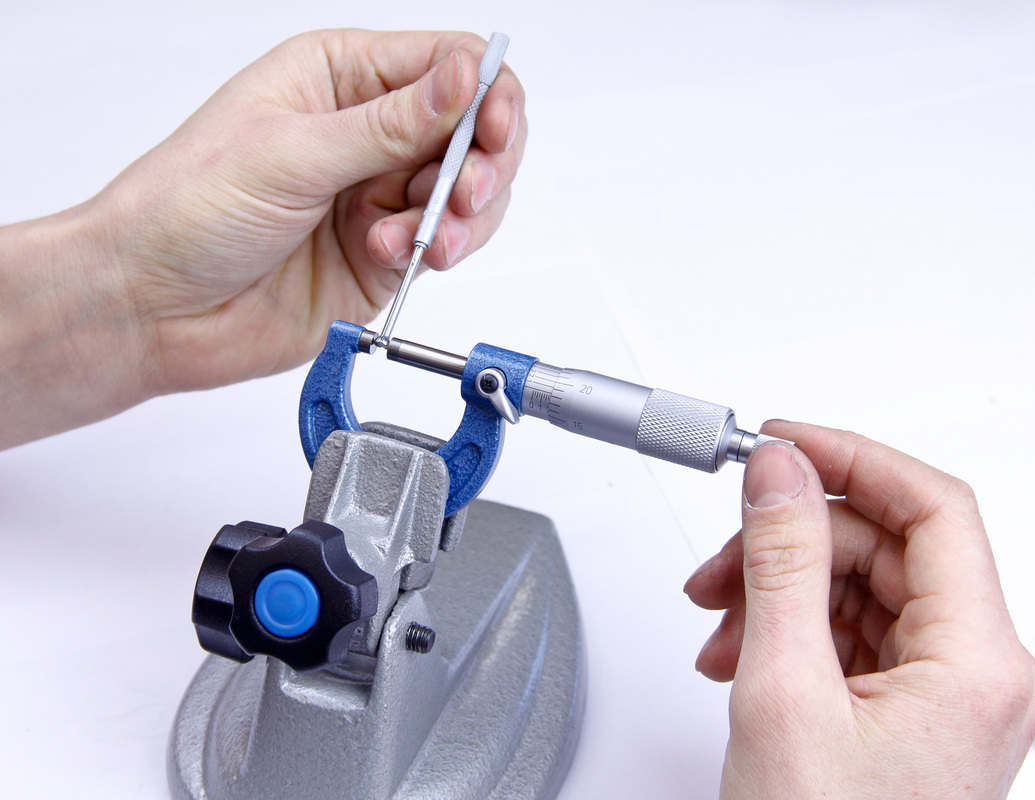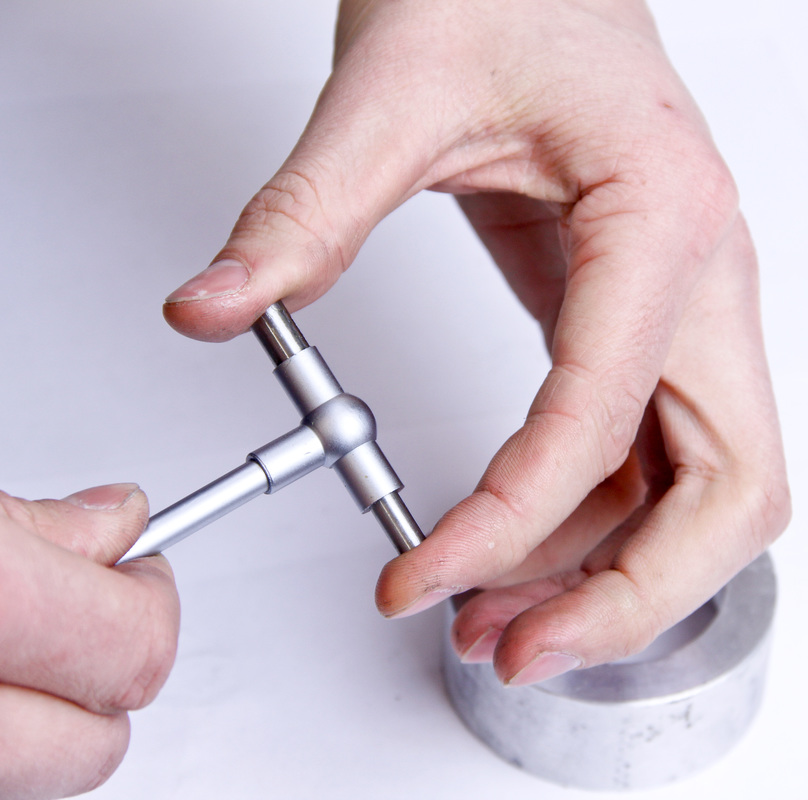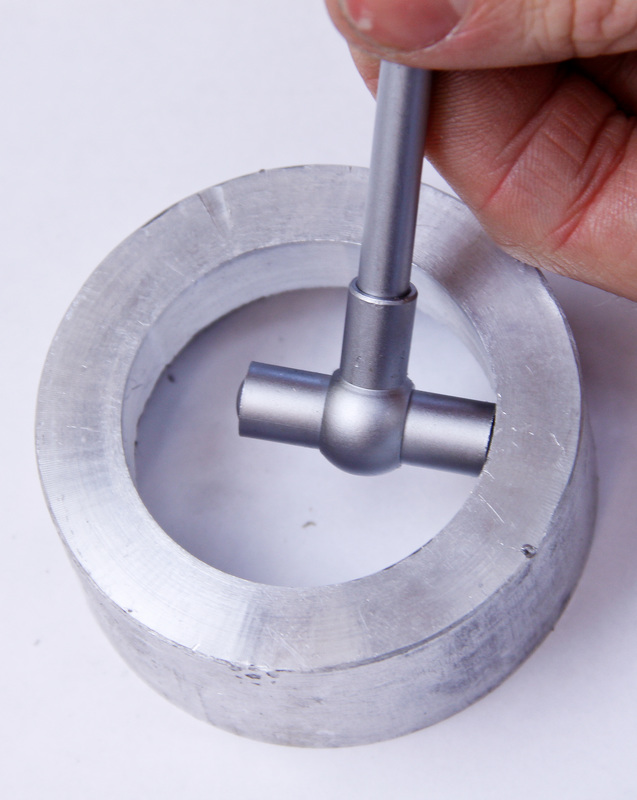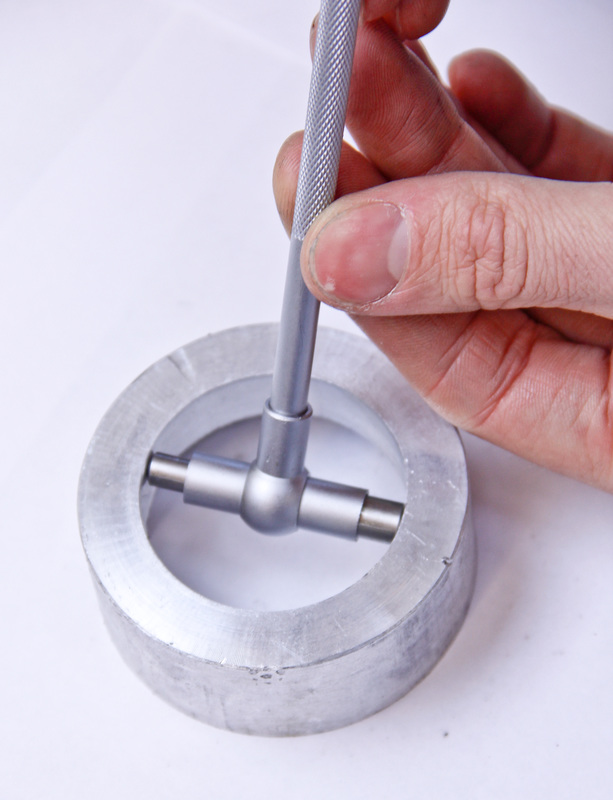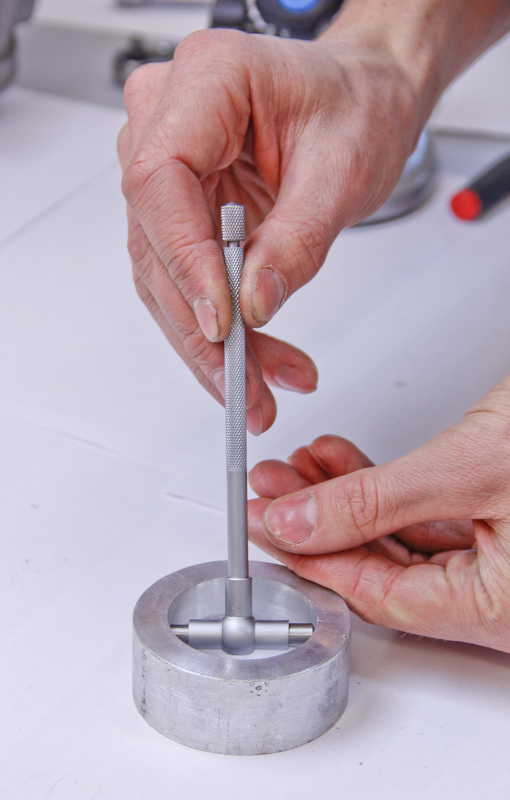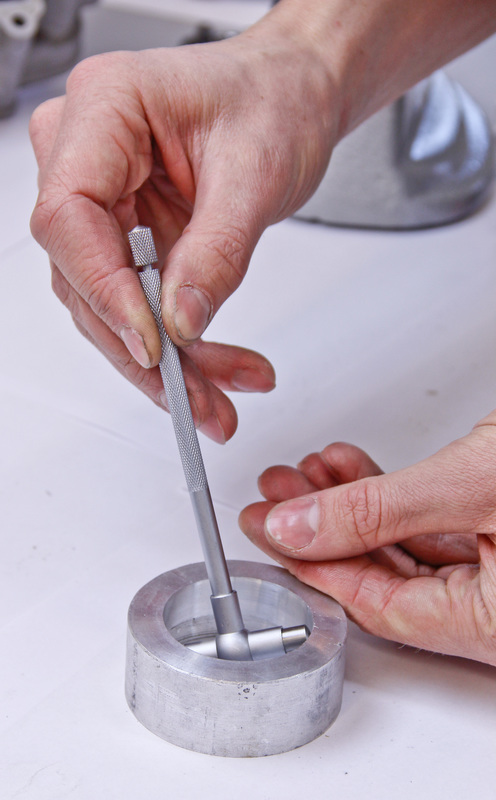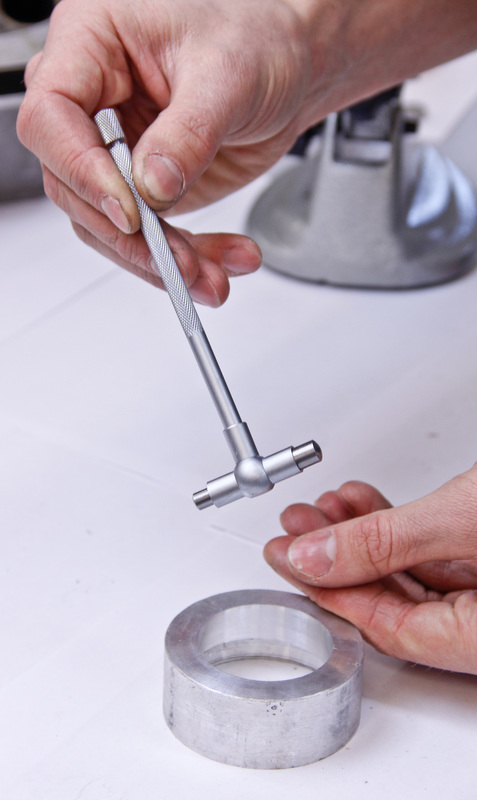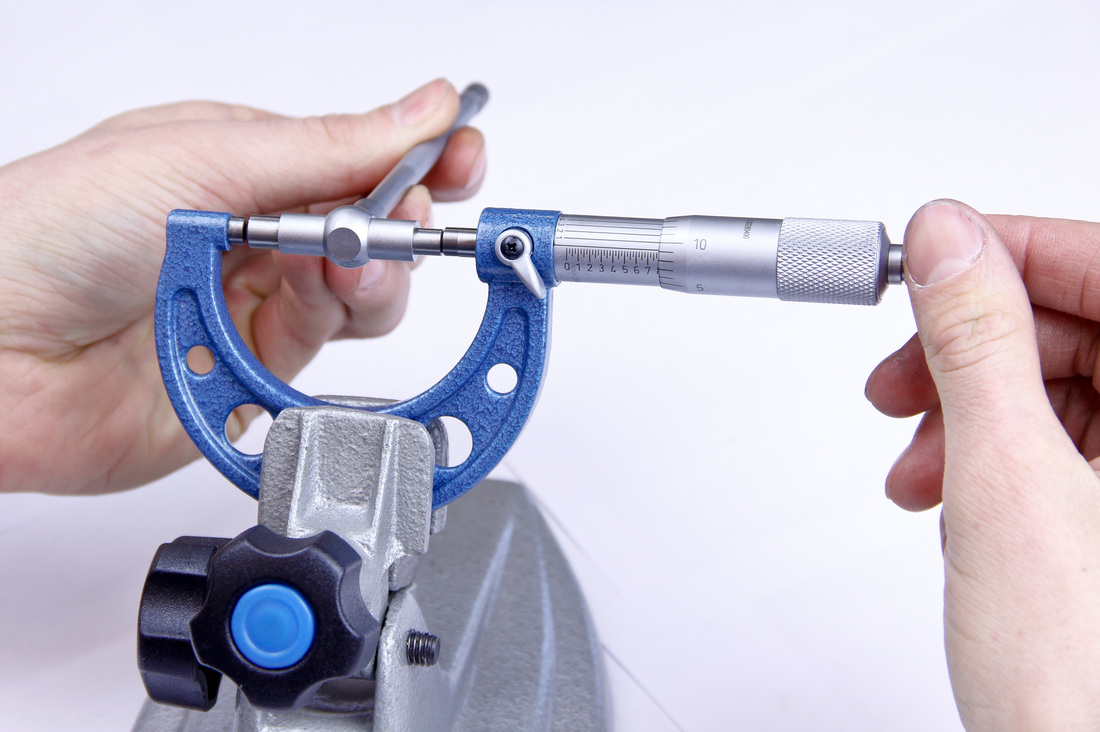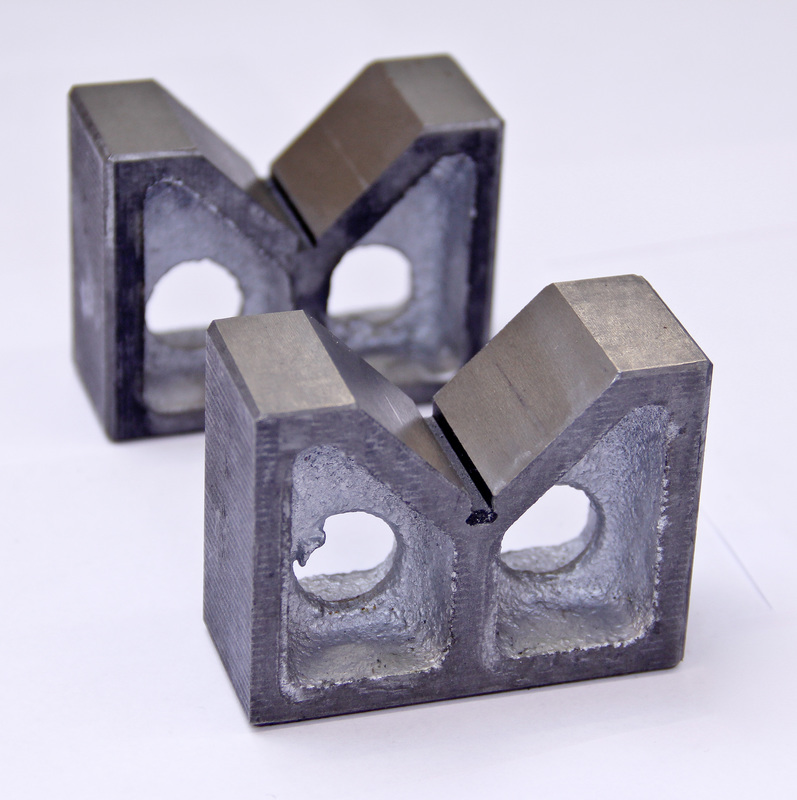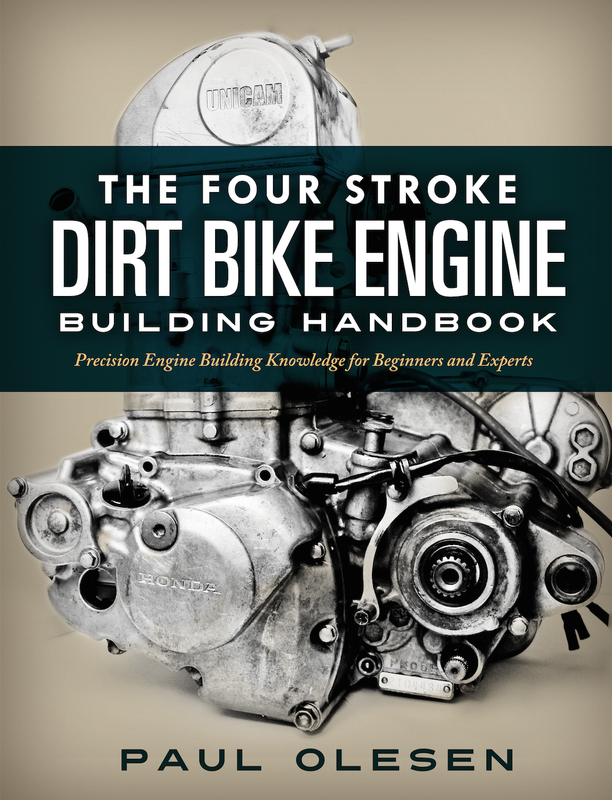As we wrap up this final post on precision measuring from my Engine Building Series, I would love to take a moment and tell you a little bit about the book I just published, The Four Stroke Dirt Bike Engine Building Handbook. As someone who has been following the DIY Moto Fix Engine Building Series posts, I think you're going to love the in-depth knowledge and information provided in this book on dirt bike engine building.
The Four Stroke Dirt Bike Engine Building Handbook provides incredible insight on the process of building a four stroke dirt bike engine. I wanted to bring at-home mechanics the level of expertise present in the industry when it comes to engine building, and do it in a way that is accessible and easy to understand.
This book is presented in a format that helps both beginners and experts. I not only write about the correct way to rebuild your engine, but also present the technical reasons why things are done the way they are in the engine building world. In addition, I supply information not found in service manuals for building high performance racing engines. Reading this book will also prevent you from making crucial mistakes that many at-home mechanics unknowingly suffer from when rebuilding.
Writing this book has been such a blast and I know you will benefit from its immense value if you are planning a rebuild. Here are a few pages from the book to give you a sneak peak on the massive amount of technical content provided for dirt bike engine building enthusiasts.
Thanks so much for your support and enthusiasm for DIY Moto Fix. Read on for my final post on utilizing the remaining six precision measuring tools.
Plastigauge
Where to Use: Examples include cam to cam journal clearance, crank bearing to crankshaft journal clearance, and crank pin to rod bearing clearance.
Calibrating Plastigauge
Finally a measurement tool where no calibration is necessary. Just make sure you choose the appropriate size strip for your application. Also make sure the plastigauge is fairly new. Plastigauge does get old after awhile and using old plastigauge may not yield accurate results.
Reading Plastigauge
1. After the plastigauge has been compressed use a calipers to measure the width of the compressed strip.
How-To Use
1. Clean the parts being assembled
2. Insert a small strip of plastigauge between the parts being assembled.
8. Use a calipers to carefully measure the width of the plastigauge
Hot Tip: With a keen eye taper and out-of-roundness can also be spotted by using plastigauge. Keep an eye out for variations in strip width after it has been compressed for clues about the condition of the bore.
Dial Indicator
In addition to the indicator getting a few accessories for the indicator will be beneficial. Most indicators are not sold with a base. Magnetic bases are really handy when setting the indicator up and provide a means of securing the indicator so it can’t move. Even when working with aluminum parts (ex. cylinder head) a magnetic base can be utilized by bolting a flat piece of steel to the aluminum part.
Dial indicators usually come equipped with rounded contact points which are ideal for measuring flat surfaces. Occasionally you may encounter a setup which requires a different contact point. A variety of contact points are offered for indicators and having an assortment never hurts.
Tip extensions are a must have if you plan on doing any deep depth work with the indicator. One situation which routinely requires a tip extension is when using the indicator to find top dead center of the piston. Tip extensions can be bought in multiple lengths.
Reading Dial Indicators
Reading a dial indicator is very similar to reading a dial calipers. The only difference is the dial indicator’s gauge face is equipped with a second smaller dial face. For an indicator with a resolution of 0.001” the small face is divided into 10 graduations. Each graduation represents a tenth of an inch. The outer dial face is divided into thousandths of an inch. Each time the outer needle rotates one revolution around, the second small needle tallies a tenth of an inch. This eliminates the need for the user to keep track of how many times the needle has gone around.
For metric and other resolutions of dial indicators the reading process is identical to the above. Take note of the units and resolution and proceed to read the indicator accordingly.
Calibrating Dial Indicators
Checking and adjusting the accuracy of dial indicators usually can’t be done easily in one’s own shop. For dial indicator calibration the indicator would have to be sent to a calibration lab. Fortunately, the applications an indicator is used for when building engines doesn’t require the utmost accuracy so calibration is seldom a problem.
How To Use
1. Clean the contact point of the indicator and the part which will be indicated.
2. Carefully set the indicator up so that it is fixed to a sturdy base which can’t move.
3. The amount of travel in each direction you will need depends on the specific application you are measuring. Consider the motion and travel of the part you want to measure and set the indicator accordingly so that it doesn’t run out of travel halfway through measuring. For example, when measuring valve lift you would want to engage the indicator so that around a quarter of the plungers travel has been used.
7. Once the indicator has been zeroed proceed to move the part being indicated and take measurements.
8. After measuring return the part to its original position. Occasionally an indicator can get bumped or something can happen during the procedure. This is a good way to confirm one last time that the indicator is still zeroed.
Dial Test Indicators
The test indicators will require fixturing so having a pair of bases, stands, and clamps is necessary. Fortunately, the test indicators use similar mounting systems as dial indicators so if you have fixturing for dial indicators you are all set to mount the test indicators.
Where To Use: Examples include crankshaft inspecting or truing.
Reading Dial Test Indicators
The gauge face of a dial test indicator is symmetrical. The face is divided into graduations based on the resolution of the test indicator. Each side of the face represents half of the total travel of the test indicator. Reading the gauge is simply a matter of determining how many graduations the needle has moved from its starting point to its ending point.
Calibrating Dial Test Indicators
Like dial indicators, calibrating dial test indicators is usually done by a professional calibration lab. As long as the test indicator is well cared for the need for calibration should be infrequent.
How To Use
Since the contact point of the test indicator travels in an arc the way the indicator is set up has an impact on measurement. This is the main reason test indicators can’t be relied on heavily for taking measurements and instead are used for comparing.
1. Clean the contact point of the indicator and the part which will be indicated.
2. Carefully set the indicator up so that it is fixed to a sturdy base which cannot move.
6. Move the part being indicated a few times returning it to its starting position each time. Check to make sure the indicator consistently reads “0”. If it doesn’t then carefully adjust the gauge face to realign the needle.
7. Once the indicator has been zeroed proceed to move the part being indicated and take measurements.
8. After measuring return the part to its original position. Occasionally an indicator can get bumped or something can happen during the procedure and this is a good way to confirm one last time that the indicator is still zeroed.
Transfer Gauges
Taking these points into consideration transfer gauges can still be incredibly helpful when measuring engine parts. Transfer gauges are one of the most relied on methods of accurately measuring internal diameters.
Small Hole Gauges
Small hole gauges are usually sold in sets capable of measuring from around 0.125 - 0.500” (3.175 - 12.4mm). Each set is comprised of around four gauges with each gauge being able to measure a certain portion of the set’s total range. For engine building purposes, small hole gauges are primarily used to measure the inner diameters of valve guides.
Where To Use: Valve guides
How to use
1. Clean the bore of the part to be measured and the head of the small hole gauge.
5. Use a micrometer to measure the diameter of the gauge to determine the diameter of the part’s bore. Since the gauge can easily be compressed little to no pressure can be applied by the measuring faces of the micrometer.
Hot Tip: Since this is partly an exercise of feel, take multiple measurements until the measurements start to yield the same results. This way you can be certain the measurements are accurate.
Telescoping Gauges
Telescoping gauges are usually sold in sets capable of measuring from around 0.3125 - 6.0” (8 - 152.4mm). Each set is comprised of around six gauges with each gauge being able to measure a certain portion of the set’s total range.
Where To Use: Examples include lifter bucket bore and cylinder bore.
How to use
1. Clean the bore of the part to be measured and the ends of the plungers on the telescoping gauge.
6. Gently wiggle the gauge back and forth while passing the gauge through the bore. Only pass the gauge through the bore once. This will center the gauge and set the plungers to the diameter of the bore.
8. Use a micrometer to measure the diameter of the gauge to determine the diameter of the part’s bore. Since the gauge can be compressed, little to no pressure can be applied by the measuring faces of the micrometer.
Hot Tip: Since this is partly an exercise of feel, take multiple measurements until the measurements start to yield the same results. This way you can be certain the measurements are accurate.
V-Blocks
That concludes my three part series on precision measuring for the at-home mechanic, pretty intricate stuff right? I always joke that I could write a book on precision measuring, and then I went and did it! Well, I at least devoted an entire chapter to its intricacies and utilization when building engines in The Four Stroke Dirt Bike Engine Building Handbook.
Click here to order the eBook version online. When purchasing be sure to enter the discount code: holeshot2015 to receive 25% off. The book will be sent right to your email address where you can either view it online or download it to your mobile phone or computer.
Sounds pretty great right? I hope you love it because we spent the last three months working hard on it to make it the number one resource for at-home dirt bike mechanics. Have a great weekend!

